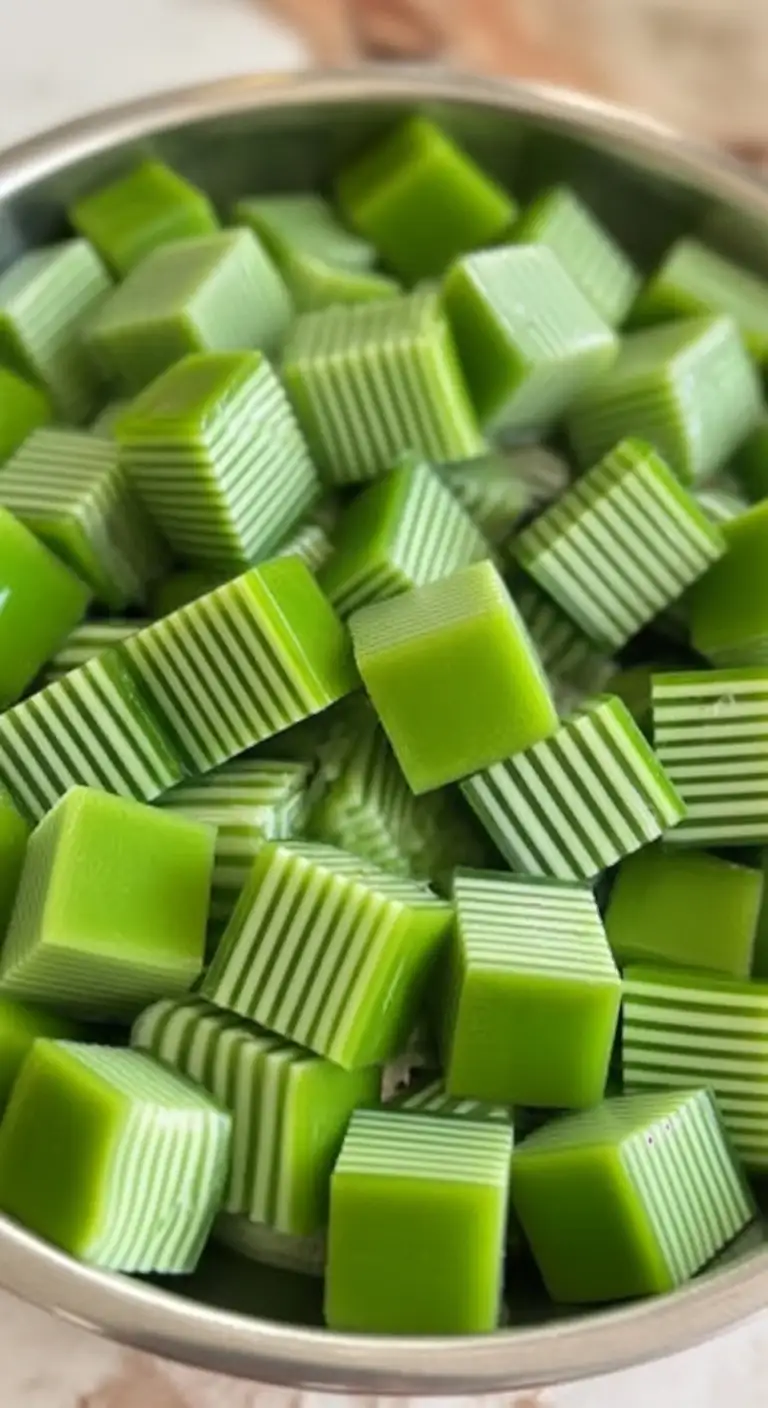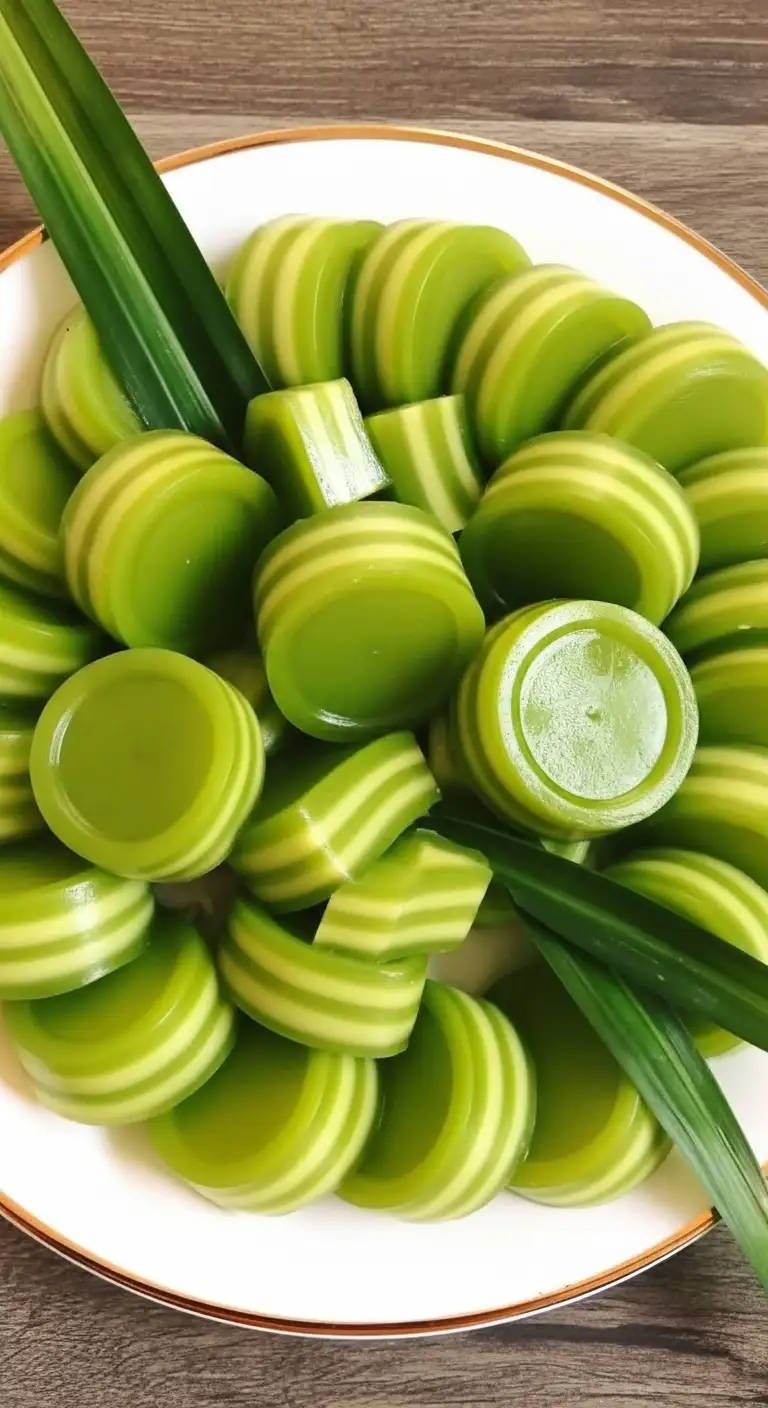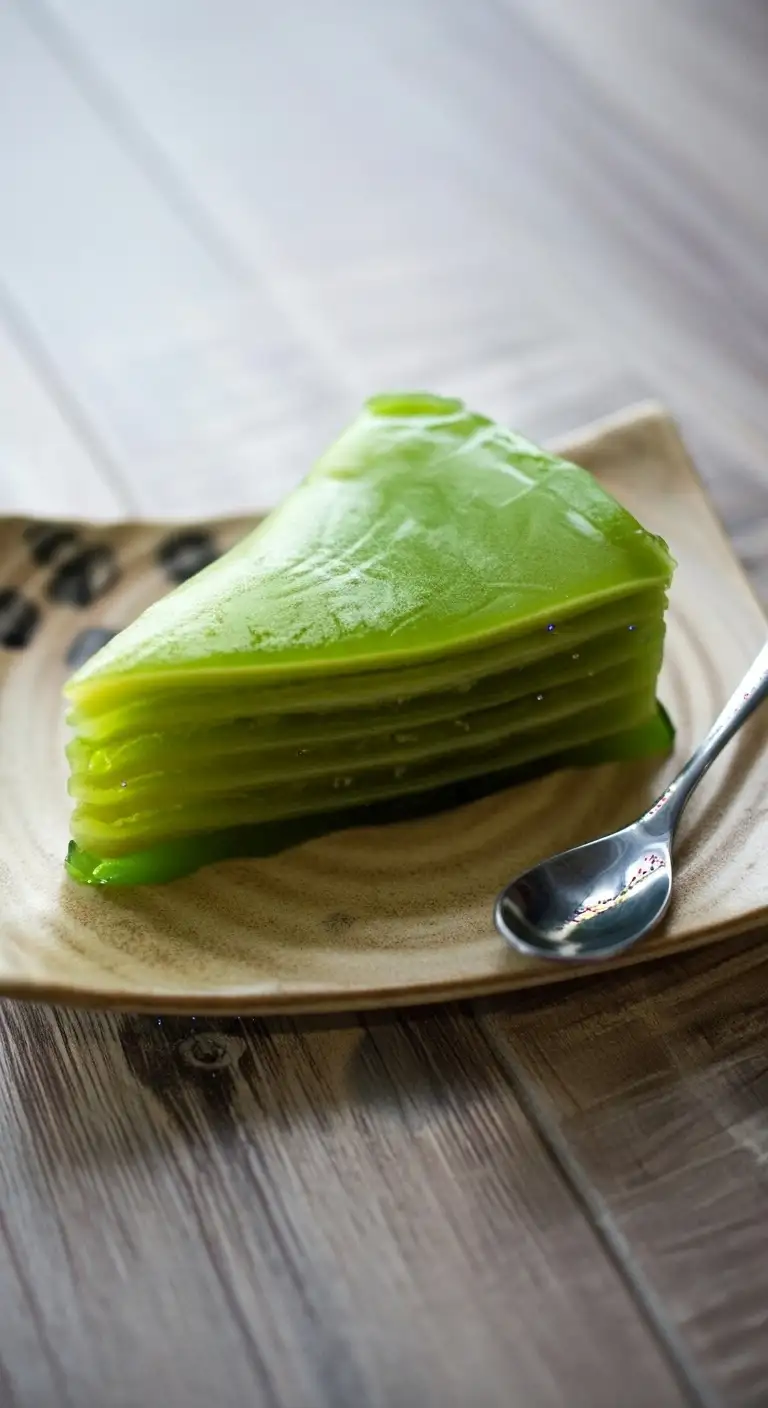Bánh Da Lợn (pronounced bahn yah lun), literally translated as “pig skin cake,” is one of Vietnam’s most recognizable and beloved traditional desserts. Despite its peculiar name—which refers to the cake’s beautifully variegated and slightly fatty, chewy texture—it is a completely vegetarian, vibrant, and aromatic sweet treat.
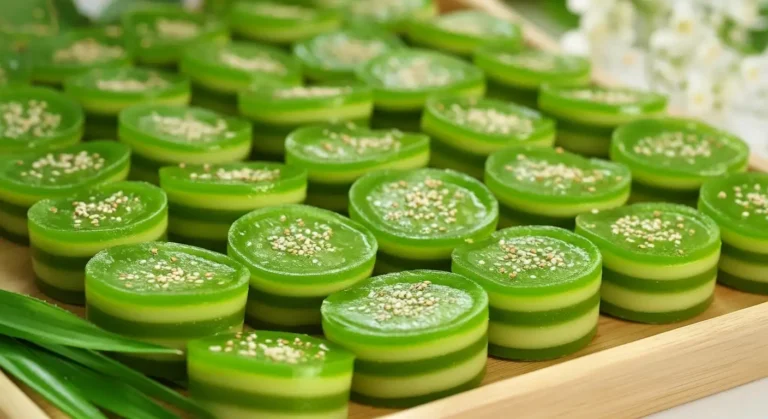
The Basics of Bánh Da Lợn
What is it?
Bánh Da Lợn is a steamed, multi-layered cake known for its alternating colors, distinct fragrance, and unique bouncy-chewy texture.
Key Components & Texture:
Flour Base: The characteristic chewiness (or “bounciness”) comes from a blend of tapioca starch (bột năng) and rice flour (bột gạo). The tapioca starch is essential for that signature flexible, slightly gelatinous quality, similar to mochi.
Sweetener and Richness: The cake is sweetened with sugar and gets its creamy richness from liberal use of coconut milk (nước cốt dừa).
Layers and Flavor: The cake is made by pouring and steaming alternating layers of two main batters:
Green Layer (The Skin): Flavored and colored with extract from pandan leaves (lá dứa), giving it a sweet, vanilla-like aroma.
Yellow/Milky Layer (The Filling): This layer is thicker and made with puréed, cooked mung beans (đậu xanh), which provides a nutty, slightly denser, and creamy paste.
Flavor Profile:
It is a sweet and aromatic dessert, with the primary flavors being fragrant pandan, creamy coconut, and earthy mung bean.
Types and Flavor Variations of Bánh Da Lợn
While the classic green pandan and yellow mung bean version is the most common, this layered cake is easily adapted with other aromatic ingredients, especially in the South where tropical produce is abundant.
| Vietnamese Name | Key Ingredient | Description |
|---|---|---|
| Bánh Da Lợn Lá Dứa | Pandan Leaf & Mung Bean | The classic version, featuring the iconic green (pandan) and yellow (mung bean) layers. |
| Bánh Da Lợn Khoai Môn | Taro | The mung bean is replaced with a layer of mashed taro (khoai môn), which is naturally purple or pale gray and adds a subtle, vanilla-like sweetness. |
| Bánh Da Lợn Sầu Riêng | Durian | A favorite for fans of the "King of Fruits." Puréed durian is mixed directly into the mung bean layer, giving the cake a potent, rich, and intensely sweet aroma. |
| Bánh Da Lợn Lá Cẩm | Magenta Plant Leaf | The pandan layer is replaced with the extract of the lá cẩm (magenta plant leaf), giving the cake a striking purple color, often paired with the white or taro layer. |
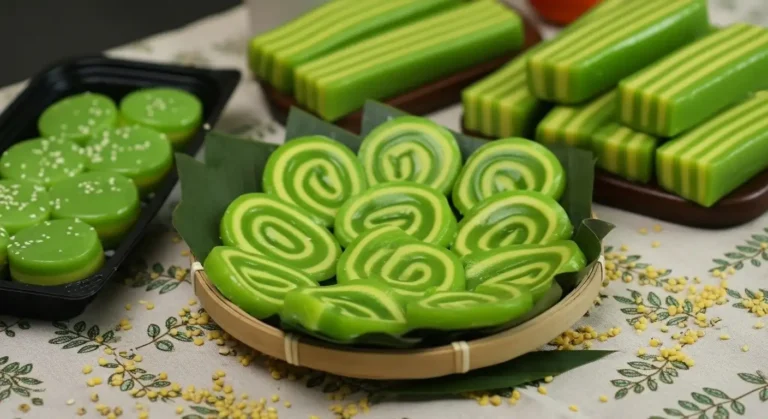
How to Enjoy Bánh Da Lợn
Bánh Da Lợn is typically enjoyed as a sweet snack (món ăn vặt) or dessert at any time of day.
Chilled is Best: Like many tapioca-based sweets, the cake must be completely cooled after steaming. It is best enjoyed chilled, as this allows the layers to firm up and fully develop their chewy texture.
Cut for Presentation: It is traditionally baked in a large round or rectangular mold and then cut into smaller, elegant diamond or square pieces for individual serving. Sometimes, it is steamed in small heart- or flower-shaped molds.
The Peeling Game: A fun part of eating Bánh Da Lợn, particularly for children, is the ability to gently peel the layers apart before eating them. The layers are flexible and elastic enough to be separated without tearing.
A Simple Treat: The cake is typically eaten on its own, without any dips or accompaniments. Its creamy, sweet flavor and complex texture make it a satisfying bite on its own, often paired with a cup of hot or iced Vietnamese tea.
Regional Differences in Bánh Da Lợn
Bánh Da Lợn is primarily a Southern Vietnamese delicacy, though its popularity has spread to the Central and Northern regions. The differences tend to be in prominence, sweetness, and specific flavor additions.
| Region | Emphasis & Style | Key Differences |
|---|---|---|
| Southern Vietnam (Mekong Delta, Ho Chi Minh City) | The Origin and Heartland. The cake is a daily staple in the South, where its preparation has been perfected. The Southern version is typically richer, creamier, and sweeter due to the abundance and quality of coconut milk and tropical fruits like durian. | Most inventive and common variants (Durian, Taro) are found here. The texture is often maximized for its signature dẻo (flexible/chewy) quality. |
| Central Vietnam (Hue, Da Nang) | A Popular Import. The cake is widely available in Central markets, often in the traditional Pandan-Mung Bean form. The sweetness may be slightly dialed back to suit the Central palate, which sometimes favors a less intense sweetness than the South. | The cake's size and shape may vary, sometimes appearing in smaller, more decorative forms influenced by the refined culinary traditions of the former Imperial Capital, Hue. |
| Northern Vietnam (Hanoi) | A Southern Counterpart. Bánh Da Lợn is available, but the North has its own similar traditional steamed layered cake, Bánh Chín Tầng Mây (literally 'Nine-Layer Cloud Cake'). This Northern counterpart is often simpler and lacks the rich mung bean or taro filling, focusing instead on the texture and pure color layers (like white, pandan green, and purple). | When Bánh Da Lợn is sold in the North, it adheres to the Southern recipe but is less common than the local alternatives. |

